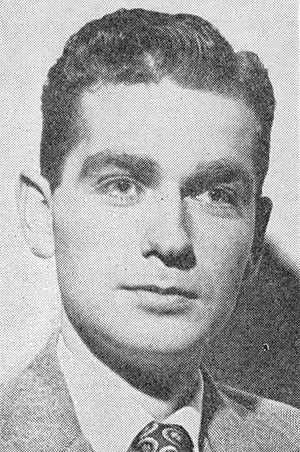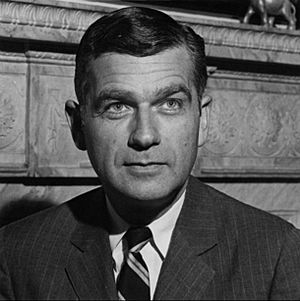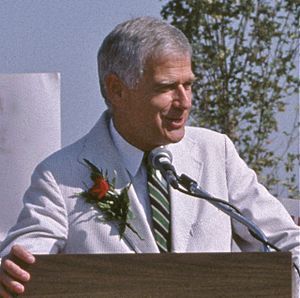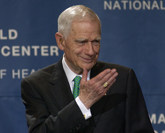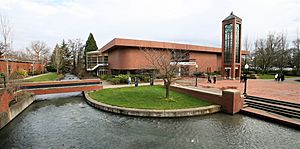Mark Hatfield facts for kids
Quick facts for kids
Mark Hatfield
|
|
|---|---|
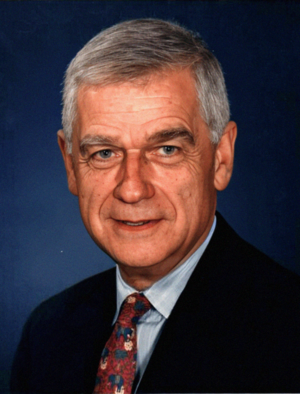 |
|
| Chair of the Senate Appropriations Committee | |
| In office January 3, 1995 – January 3, 1997 |
|
| Preceded by | Robert Byrd |
| Succeeded by | Ted Stevens |
| In office January 3, 1981 – January 3, 1987 |
|
| Preceded by | Warren Magnuson |
| Succeeded by | John C. Stennis |
| United States Senator from Oregon |
|
| In office January 10, 1967 – January 3, 1997 |
|
| Preceded by | Maurine Neuberger |
| Succeeded by | Gordon Smith |
| 29th Governor of Oregon | |
| In office January 12, 1959 – January 9, 1967 |
|
| Preceded by | Robert D. Holmes |
| Succeeded by | Tom McCall |
| 16th Secretary of State of Oregon | |
| In office January 7, 1957 – January 12, 1959 |
|
| Governor | Elmo Smith Robert D. Holmes |
| Preceded by | Earl T. Newbry |
| Succeeded by | Howell Appling, Jr. |
| Personal details | |
| Born |
Mark Odom Hatfield
July 12, 1922 Dallas, Oregon, U.S. |
| Died | August 7, 2011 (aged 89) Portland, Oregon, U.S. |
| Resting place | Willamette National Cemetery |
| Political party | Republican |
| Spouse |
Antoinette Kuzmanich
(m. 1958) |
| Children | 4 |
| Education | Willamette University (BA) Stanford University (MA) |
| Military service | |
| Allegiance | |
| Branch/service | |
| Years of service | 1943-1947 |
| Rank | Lieutenant (junior grade) |
| Battles/wars | World War II • Pacific Theater |
Mark Odom Hatfield (born July 12, 1922 – died August 7, 2011) was an important American politician and teacher from Oregon. He was a member of the Republican Party. He served for 30 years as a United States senator for Oregon. He also led the Senate Appropriations Committee, which decides how government money is spent.
Hatfield was born in Oregon. He served in the United States Navy during World War II in the Pacific. After the war, he earned a master's degree from Stanford University. He then returned to Oregon to teach at Willamette University. While teaching, he also served in the Oregon state legislature.
He became the Oregon Secretary of State at age 34. Two years later, he was elected the 29th Governor of Oregon. He was the youngest person to hold both of these jobs. After two terms as governor, he was elected to the United States Senate. He served there for 30 years, becoming the longest-serving Senator from Oregon. Many places in Oregon are named after him, including courthouses, libraries, and research centers.
Contents
Early Life and Education
Mark Hatfield was born in Dallas, Oregon, on July 12, 1922. He was the only son of Dovie E. (Odom) Hatfield, a schoolteacher, and Charles Dolen Hatfield, a blacksmith. When Mark was five, his grandmother helped care for him while his mother went to college. His mother became a teacher in Dallas and later in Salem.
Mark's mother encouraged him to get involved in politics. At age 10, he campaigned for President Herbert Hoover. In the late 1930s, he worked as a tour guide at the Oregon State Capitol Building in Salem. He even sat in the governor's chair, dreaming of his future.
Hatfield graduated from Salem High School in 1940. He then went to Willamette University in Salem. While in college, he worked part-time for Oregon Secretary of State Earl Snell. He learned how to connect with voters by sending messages after reading about important life events in newspapers. He even planned out his political career, aiming for the state legislature and then the U.S. Senate. He graduated from Willamette in 1943.
Military Service in World War II
After college, Hatfield joined the United States Navy. He served in World War II, taking part in battles like Iwo Jima and Okinawa. He was a landing craft officer. As a lieutenant, he was one of the first Americans to see the destruction in Hiroshima after the atomic bombing. This experience made him oppose the spread of nuclear weapons later in his career. After Japan, he served in French Indochina (now Vietnam). He saw the big differences between the poor local people and the wealthy French colonists.
After leaving the Navy, he briefly attended law school. But he decided that politics or teaching suited him better. He then went to Stanford University and earned a master's degree in political science in 1948. He returned to Willamette University as a political science professor. He continued to build his political connections by speaking at many public events.
Political Career in Oregon
Mark Hatfield's political career lasted for five decades. He held important jobs in Oregon's state government. He also became the longest-serving U.S. Senator from Oregon.
Starting in the State Legislature
In 1950, while teaching at Willamette, Hatfield began his political journey. He was elected to the Oregon House of Representatives as a Republican. He was the youngest legislator in Oregon at the time. He served two terms, representing Marion County and Salem. He would teach his morning classes and then walk to the Capitol to work as a legislator.
In 1953, he helped pass a law in Oregon that stopped discrimination based on race in public places. This happened before similar laws were passed at the national level. In 1954, Hatfield was elected to the Oregon State Senate.
Oregon Secretary of State and Governor
In 1956, at age 34, Hatfield became the youngest Oregon Secretary of State in history. He won the election and took office in January 1957. He served until January 1959.
For his first run for Governor of Oregon in 1958, many in his own Republican Party did not support him at first. But his strong connections with voters helped him win the party's primary election. In July 1958, Hatfield married Antoinette Kuzmanich. They had four children: Elizabeth, Mark Jr., Theresa, and Charles.
In the general election, Hatfield faced the Democratic governor, Robert D. Holmes. Hatfield won the election, becoming the youngest governor in Oregon's history at 36 years old. He was re-elected in 1962, becoming the first Oregon governor in the 20th century to serve two full terms.
As governor, Hatfield supported Oregon's main industries like timber and farming. But he also focused on growing new industries and improving transportation and education. He helped create the Oregon Graduate Center in 1963 to attract new businesses and skilled workers to the state.
National Political Career
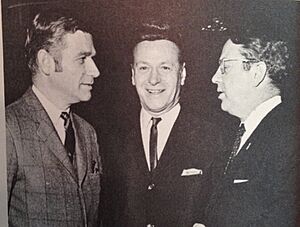
In 1966, Hatfield ran for the United States Senate. He won the election and became a U.S. Senator for Oregon. He delayed taking his oath of office until January 10, 1967, to finish his term as governor.
Hatfield became a well-known figure nationally. In 1968, he was considered as a possible running mate for Richard Nixon for vice president. However, Nixon chose someone else. Hatfield later disagreed with Nixon on issues like the Vietnam War.
As a senator, Hatfield often took unique political stances. He was against the death penalty. As a Christian, he supported civil rights for minorities. He voted for the Civil Rights Act of 1968. He also supported making Martin Luther King Jr. Day a federal holiday.
In 1970, with Senator George McGovern, he proposed an amendment to withdraw U.S. troops from the Vietnam War. He also suggested a "Neighborhood Government Act." This idea would let Americans send their federal tax money to their local communities instead of Washington, D.C. His goal was for local communities to provide social services.
In the 1980s, Hatfield worked with Senator Edward M. Kennedy to propose a freeze on nuclear weapons. He also wrote a book about it. He supported closing a nuclear reactor in Washington state that produced plutonium for weapons.
Hatfield often disagreed with his own party on military spending and foreign policy. He believed in non-interventionism, meaning the U.S. should avoid getting involved in other countries' conflicts. He was the only Republican senator to vote against the defense spending bill in 1981. In 1991, he was one of only two Republican senators to vote against military action in the Gulf War against Iraq.
In 1995, Hatfield cast the deciding vote against a proposed balanced budget amendment to the Constitution. This was a very famous moment in his career.
Longest-Serving Senator
In 1993, Mark Hatfield became the longest-serving senator from Oregon. He retired in 1996, after never losing an election in 46 years. During his time in the Senate, he helped bring billions of dollars in federal funding to Oregon. This money supported transportation, environmental protection, research, and health care projects.
Later Years and Legacy
After leaving politics, Mark Hatfield returned to teaching. He taught at George Fox University and the Mark O. Hatfield School of Government at Portland State University, which is named after him. He also gave lectures at Willamette University and Lewis & Clark College.
Many buildings, organizations, and awards are named in honor of Mark Hatfield. These include:
- The Mark O. Hatfield Library at Willamette University.
- The Hatfield Marine Science Center at Oregon State University.
- The Mark O. Hatfield Clinical Research Center at the National Institutes of Health in Maryland.
- The Mark O. Hatfield Wilderness area in Oregon.
- The Mark O. Hatfield United States Courthouse in Portland.
His personal papers and book collection are kept at the Mark O. Hatfield Library at Willamette University. A documentary about his life, called The Gentleman of the Senate: Oregon's Mark Hatfield, was released in 2014.
Mark Hatfield passed away in Portland, Oregon, on August 7, 2011, after a long illness.
Works Authored
Here are some books Mark Hatfield wrote or helped write:
- Not Quite So Simple (1968)
- Conflict and Conscience (1971)
- Between a Rock and a Hard Place (1976)
- Against the Grain: Reflections of a Rebel Republican (2000)
- Freeze! How You Can Help Prevent Nuclear War (1982) (with Edward Kennedy)


